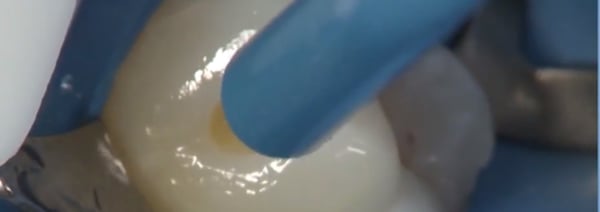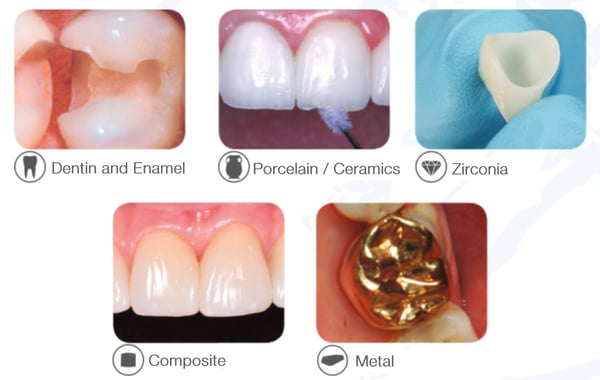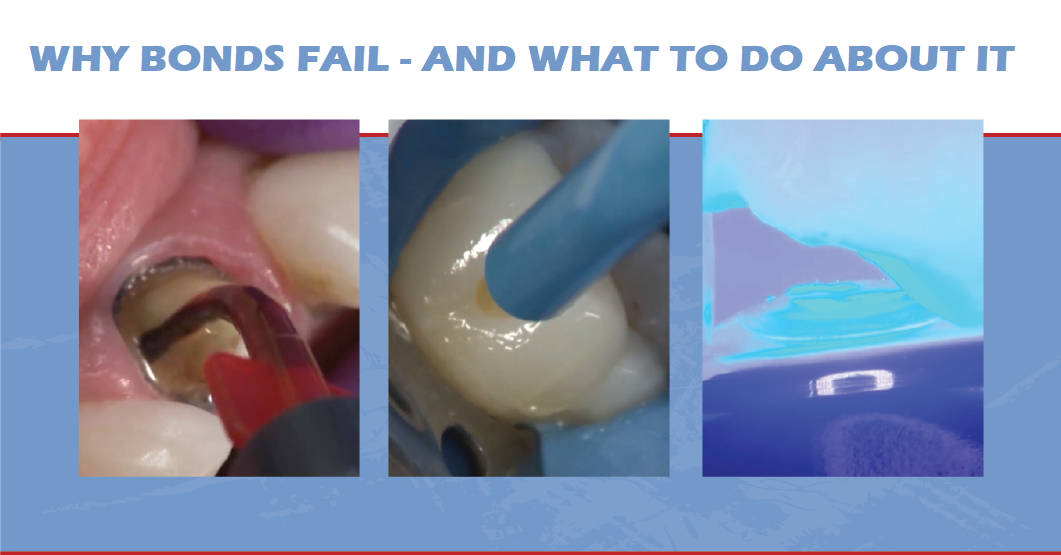Bonding is fundamental in all dental restorations. During the dental adhesive application procedure there are 3 critical, yet often times neglected, steps that we need to pay close attention to. They are:
Improper Scrubbing
Sufficient scrubbing is necessary in order to work the bonding agent down into dentin tubules. When dentin is etched, it opens up tubules and exposes collagen fibers. If the adhesive doesn’t fully penetrate the tubules and collagen fibers, bond strengths will be compromised and post-op sensitivity may be present due to gaps in the tubules.![]()
Bonding is a mechanical interlock of the resin into dentin tubules and into the microscopic areas created by the etch. Ultradent recommends vigorously scrubbing in the adhesive for the proper amount of time. This technique aids the solvents in penetrating as far as the etchant did and impregnating the tubules with resin.
Improper Thinning
Once the solvents in an adhesive have done their job, they need to be evaporated prior to light curing. Air thinning also helps achieve the right thickness of the bonding material. If sufficient air thinning does not happen, remaining solvents will inhibit polymerization and the layer of adhesive will be too thick, allowing it to absorb water. Both of these scenarios can cause the bond to fail.![]()
We recommend holding suction by the preparation and air thinning with a sustained, half pressure stream of air beginning about one inch away from the restoration and steadily moving closer. This helps to create a thin, smooth, plastic wrap-like coat that is free of solvents and ready for light polymerization.
Improper Curing
Almost all adhesives on the market are light polymerized and therefore must be completely cured with a light in order to be effective. The hybrid layer of tooth and bonding agent is what sets the stage for a strong, long-lasting composite restoration. If the bonding material is not completely cured, it will be soft and compromise the effectiveness of the composite/cement.![]()
For a complete cure, we recommend holding the curing light steady over the preparation for the recommended time of cure, angling the light beam directly onto the preparation, and using a curing light with an output greater than 600mW/cm2. The VALO LED curing light has, among other features, three power modes ranging from 1000mW/cm2 to 3200mW/cm2 and a collimated light beam that minimizes the loss of light when there is a distance between the restoration and the light source, as in class I and class II restorations.
VERSATILITY FOR RELIABLE BONDS
Peak Universal Bond adhesive ensures a strong, lasting bond with dentin, enamel, porcelain, metal, composite, and zirconia. Its versatility makes it ideal for bonding direct and indirect restorations as well as post and core procedures.








